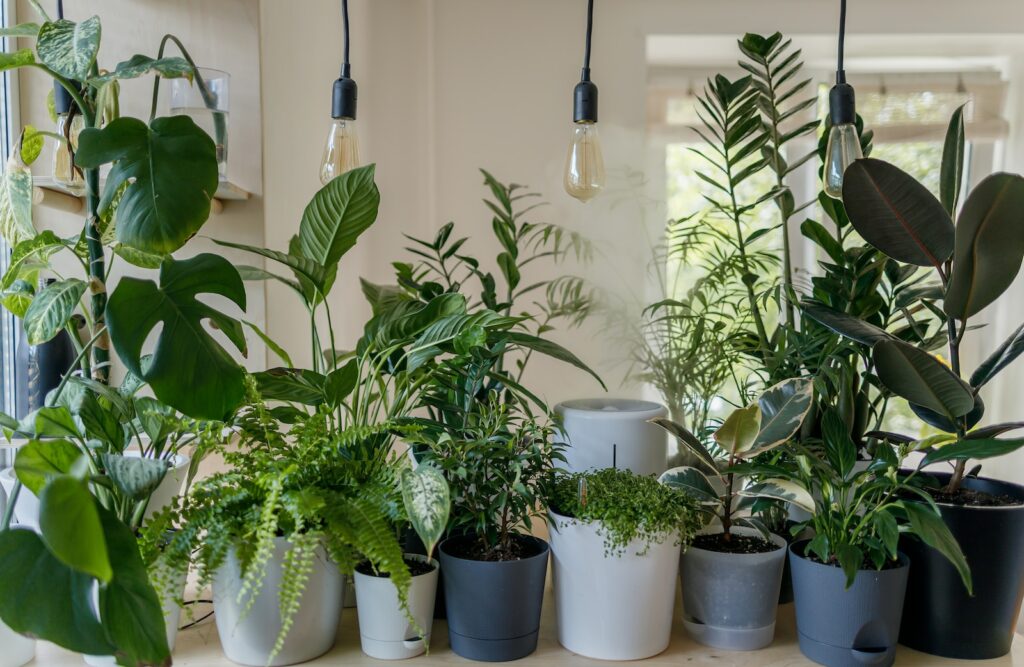As we embark on our journey of figuring out the best time to water indoor plants, we encounter a perennial question: is day time or night time better for quenching their thirst? Like a captivating mystery, the answer is layered and dependent on various factors.
Just as plants flourish under different conditions, their watering needs are diverse. In this comprehensive article, we’ll delve into the intricacies of watering indoor plants and delve deep into the age-old debate: Is it preferable to water them in the morning or evening? Armed with a wealth of knowledge, we’ll equip ourselves to provide impeccable care for our verdant companions.
The Sunlit Path: Morning Watering
As the sun’s gentle rays begin to caress your indoor sanctuary, you’re presented with the tranquil beauty of the morning routine. The concept of morning watering has enjoyed a long-standing reputation for being advantageous. The reasons are as bright as the early daylight hours.
During the morning, temperatures are typically cooler, offering an environment where water can be absorbed efficiently without the threat of rapid evaporation. Picture the scene: as the sun ascends, plants awaken and gear up for a day of growth and photosynthesis. Morning watering plays an integral role in providing them with the hydration required to initiate these essential metabolic processes.
Beneath the Moon’s Gaze: Nighttime Watering
Amidst the nocturnal calm, you find yourself contemplating the allure of nighttime watering. This approach takes on a serene quality, casting a peaceful ambiance over your plant haven. Nighttime watering holds particular benefits, especially during the sweltering days of summer.
When the sun’s intensity makes daytime temperatures soar, watering at night becomes a strategic move. The cooler evening air prevents rapid evaporation, affording your plants ample time to absorb the life-sustaining moisture. However, as with all things, there’s a caveat to keep in mind. Plants that linger in damp conditions for extended periods might become susceptible to fungal diseases. To prevent this, a delicate balance must be struck, ensuring that moisture isn’t overabundant.
A Closer Look: Morning Watering
Advantages:
- Optimal Absorption: The cooler temperatures of the morning facilitate efficient water absorption without immediate evaporation.
- Fungal Protection: The daytime hours allow wet foliage to dry out, mitigating the risk of fungal growth.
- Daylight Synergy: Morning watering aligns with the natural growth patterns of plants during their active hours.
Considerations:
- Foliage Hygiene: To prevent disease, ensure that water droplets on leaves have ample time to evaporate before the evening.
A Nighttime Perspective: Night Watering
Advantages:
- Evaporation Resilience: The lower evening temperatures result in reduced water evaporation, enabling effective moisture absorption.
- Heat Alleviation: Night watering serves as a cool reprieve for heat-stressed plants, especially during heatwaves.
- Midday Stress Avoidance: By watering at night, plants are spared the task of absorbing water during the hottest part of the day.
Considerations:
- Fungal Vigilance: Excessive nighttime moisture can invite fungal growth, particularly in conditions with poor air circulation.
Finding Common Ground: The Balanced Approach
In the vast realm of plant care, balance often emerges as the key to success. The debate over whether morning or nighttime watering prevails becomes less of a dichotomy and more of a middle ground. As with most things in life, the answer might depend on nuances specific to your situation.
Factors like the plant species, type of potting medium, indoor humidity levels, and even your home’s temperature contribute to the equation. Generally, a well-rounded approach advocates for morning watering. This grants your plants the opportunity to absorb moisture during their active hours, while also allowing any excess moisture to dissipate as the day unfolds.
Signs of Healthy Hydration: The Language of Plants
Observing your plants provides valuable cues about the success of your watering routine. Lush, vibrant leaves and steady growth indicate that your watering schedule is in harmony with your plants’ needs. On the other hand, if you notice yellowing leaves, wilting, or perpetually damp soil, it’s a signal that adjustments might be necessary.
Conclusion: Best Time To Water Indoor Plants
In the grand tapestry of plant care, knowing the best time to water indoor plants is very essential. The question of whether morning or nighttime watering holds the upper hand might not have a definitive answer.
Instead of seeking a one-size-fits-all solution, it’s wise to tune into your plants’ individual requirements and the conditions that nurture them best. The ultimate decision boils down to providing consistent care and attention. As you cultivate this habit and observe your plants’ response, you’ll unravel the secrets to fostering an indoor haven where green life thrives.
FAQs
Q: Is watering indoor plants at any time of day permissible?
While the morning and evening are often touted as optimal choices, the right time can vary based on individual plant needs and the unique conditions within your home.
Q: Is morning watering suitable for all plant types?
Morning watering generally benefits plants by providing them with hydration for the day ahead. Yet, certain plants with specific requirements might also thrive with nighttime watering.
Q: What risks accompany overwatering during the night?
Watering at night can heighten moisture levels, leading to potential fungal growth. Proper drainage and avoiding direct contact with foliage can help mitigate this risk.
Q: Should my watering routine adjust according to the changing seasons?
Indeed, seasonal variations can influence indoor humidity. During dry winter months, modifying your watering schedule might be essential to maintain optimal moisture levels.
Q: How can I ensure consistent watering when I travel often?
Consider utilizing self-watering systems or enlisting a friend or neighbor to tend to your plants in your absence. Automated watering systems can also offer a reliable solution for maintaining a steady watering schedule.

